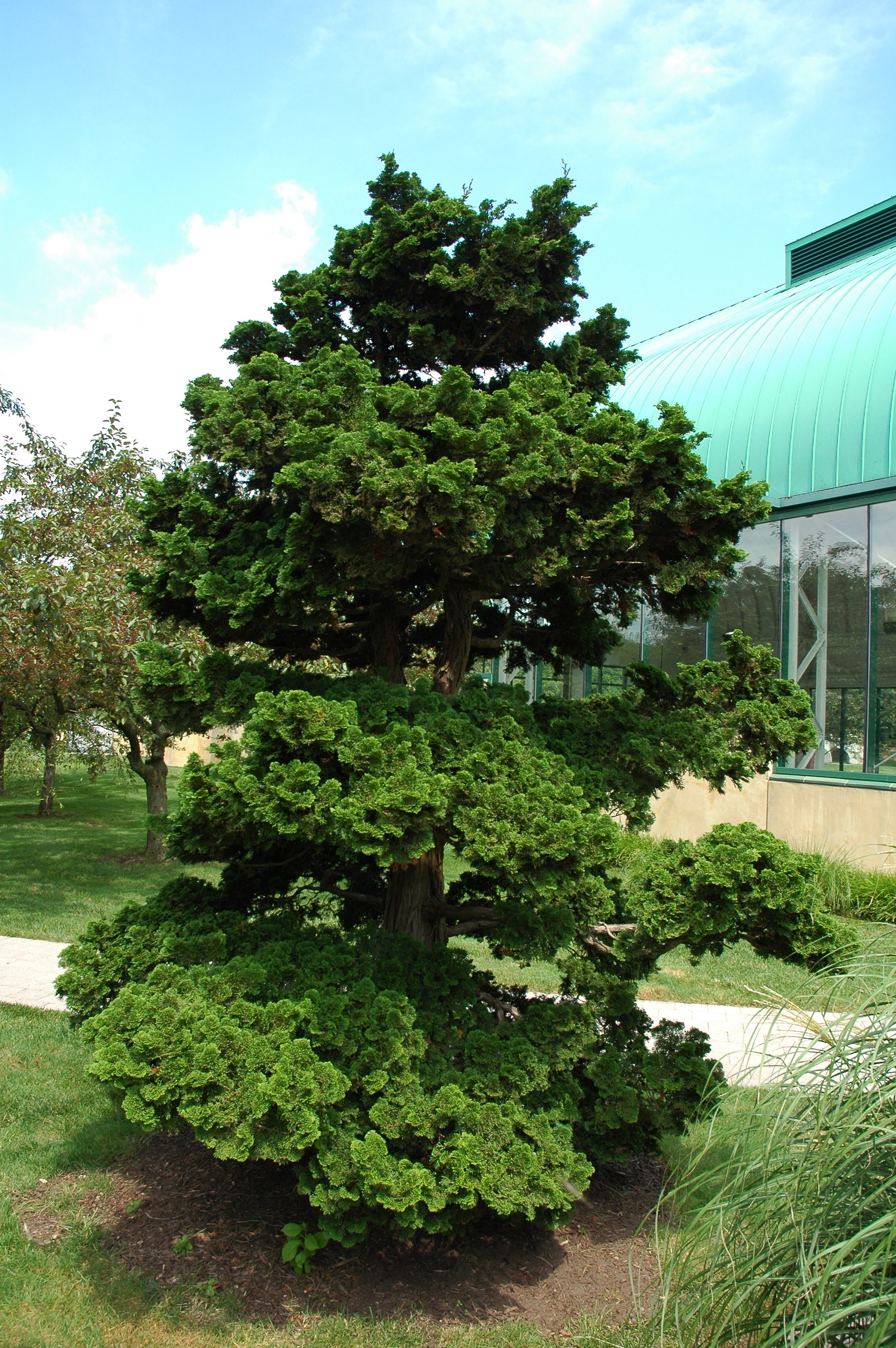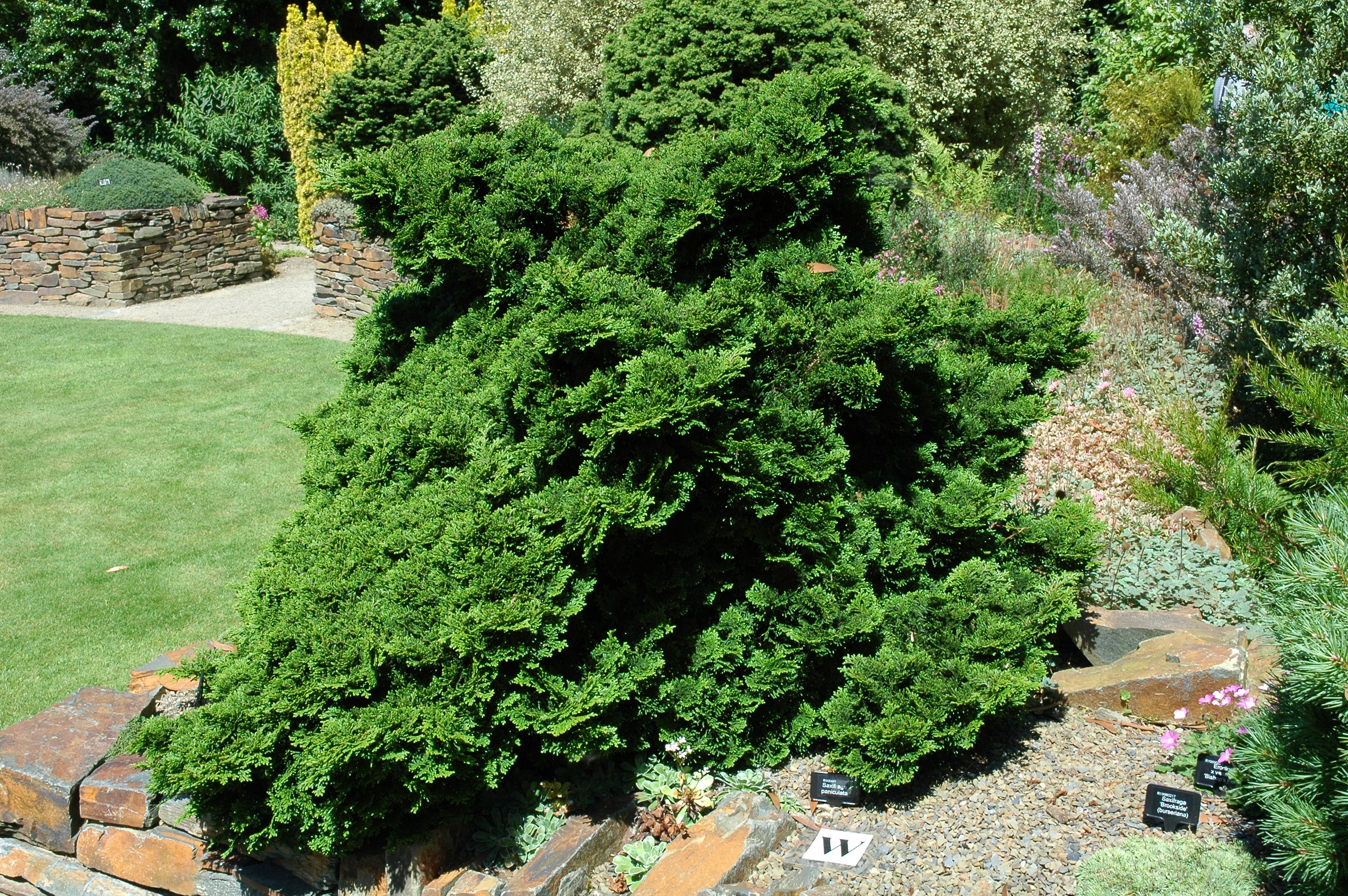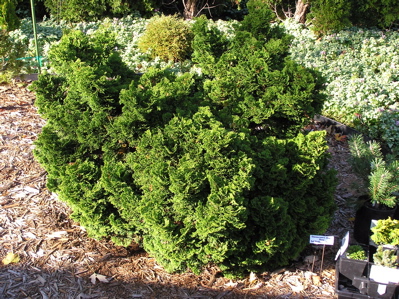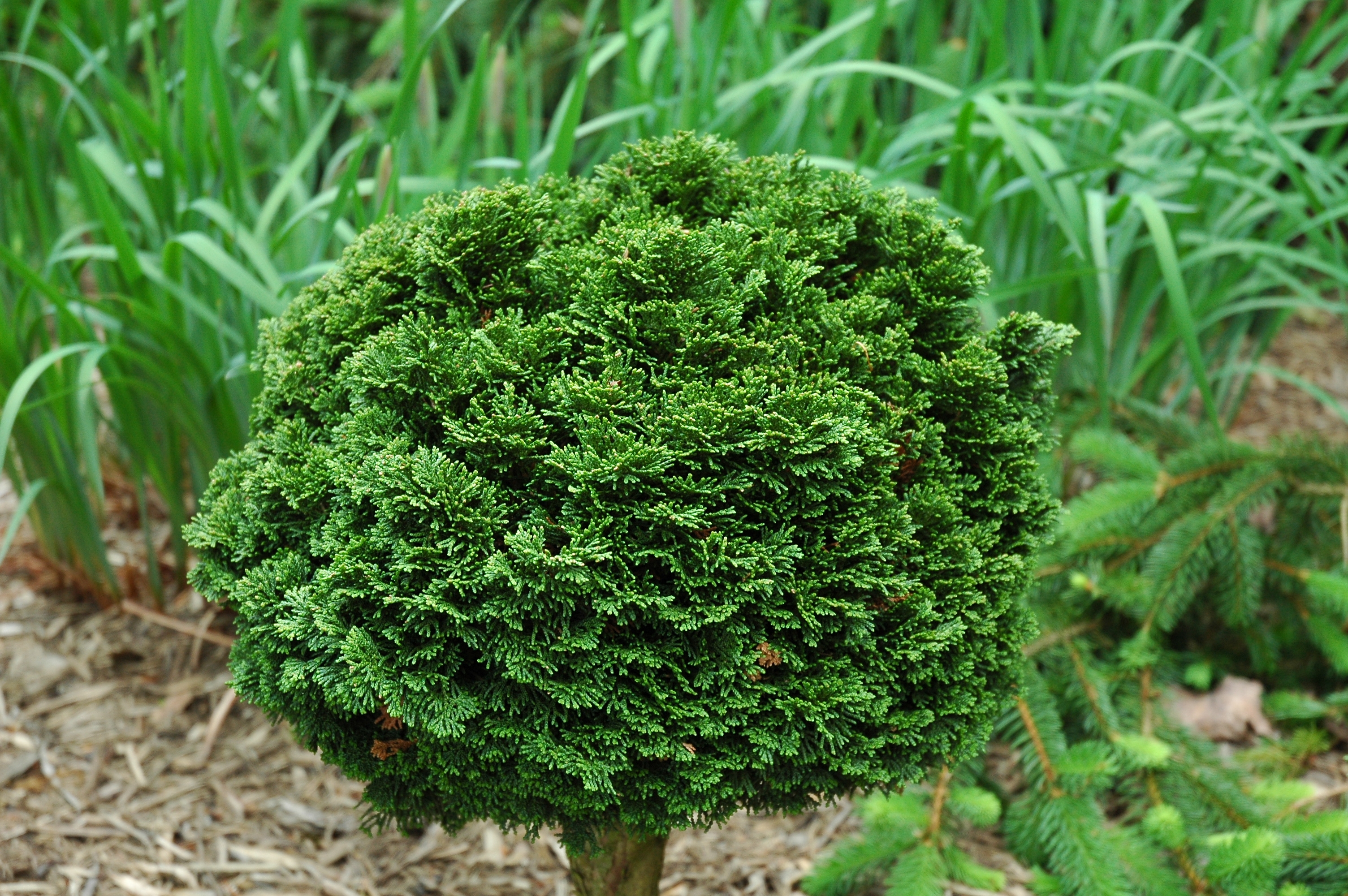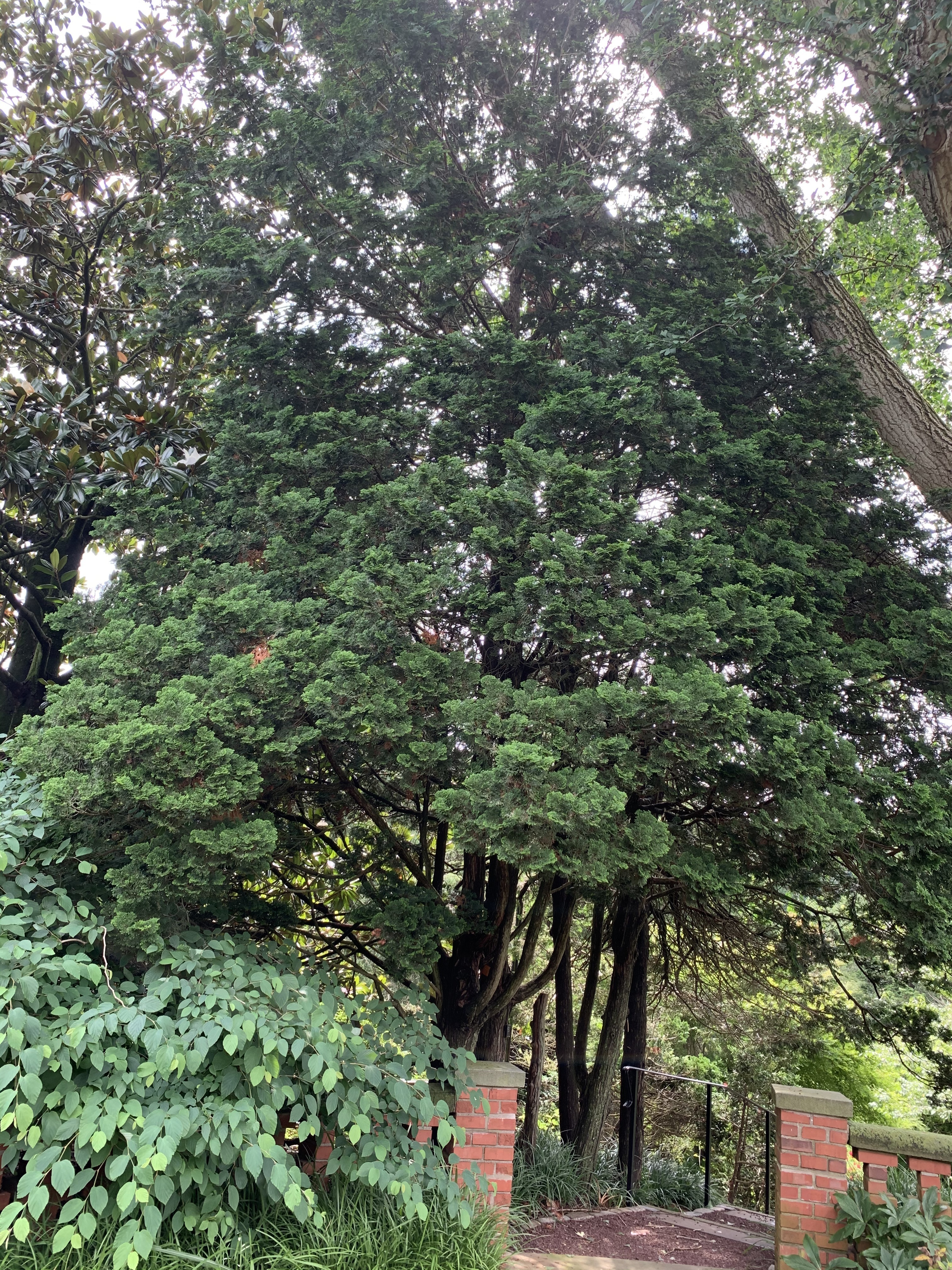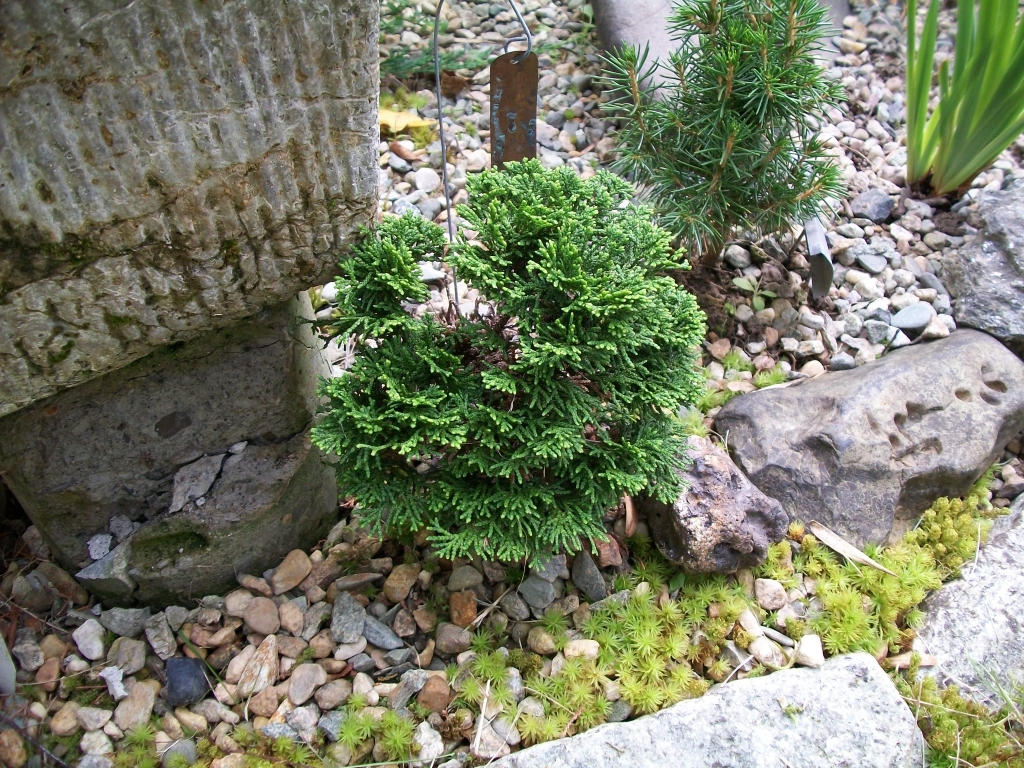Chamaecyparis obtusa 'Nana' is the very desirable class of dwarf Hinoki cypress that is actually harder to locate in the nursery trade than one would think. Over the decades, nurseries have taken the strongest cuttings for propagation essentially creating a faster growing clone that they market under the same name.
A proper Ch. obtusa 'Nana' is a true dwarf with dense, dark, blackish-green cup-shaped sprays of foliage growing with tight, narrowly globose form that over time will "open up," becoming more conical with age. After 10 years, a mature specimen will measure 6 to 8 inches (15 - 20 cm) tall and 5 - 6 inches (12 - 15 cm) wide, an annual growth rate of only about 0.5 inch (less than 1 cm).
This is a very old cultivar that originated in Japan long ago. P.F. van Siebold is credited for introducing the plant to Europe via Leiden, The Netherlands in the 1860s.
